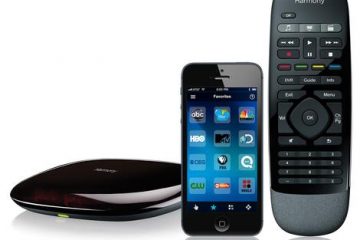Once again, it is time to look into the crystal ball and take stock of the business of technology in the new year. Some of my predictions from last year have come to pass while a few from the years before are still trying to have their day in the sun. Let’s have some fun and look at what I thought would be important trends in this past year and then take a look at what might be on the horizon.
Probably my biggest gamble last year was that Google would acquire Netflix, this is something they could have used to bolster their fledgling GoogleTV initiative. This didn’t happen, and while Google is busy rolling out Android 3.1 it seems that they may have reached an impasse. At this point, Sony is the only manufacturer of GoogleTV hardware and product reviews have been luke-warm. I also thought that Microsoft would acquire an industry leader like BlackBerry to bolster their floundering Windows Phone division; they did something rather close in their partnership with Nokia which may help them sustain their smart-phone platform for the foreseeable future.
Programming paradigm shifts were rather evident on TIOBE during the past year, Objective-C moved from an 8th position into the top 5 programming languages and C# nearly overtook C++. I expect within a few more months the C# platform will move into the third position right behind Java and C, and of course Objective-C will continue to grow. What’s in store for 2012?
- Microsoft Releases Software. There are a number of platform shifts underway, which is making it difficult for Microsoft to maintain a virtual monopoly on the PC desktop. In the new year, expect to see more apps for iOS and even Android from Microsoft, this will likely include a full Office offering that runs on your iPad. Microsoft may position their developer tools – including Visual Studio – for additional platforms including OS X and iOS development. Opportunities abound if Microsoft can return to its roots and focus on building great software and development tools without being locked to the Windows operating system.
- Streaming Internet TV. This is going to be an emerging trend as consumers vent frustration with the complexities of cable providers like Comcast. The switch to digital cable has required subscribers to attach set-top boxes to their TV’s which invariably makes the entire configuration difficult for a PVR. Services like Hulu and Netflix continue to erode the market share of cable subscribers, and consumers will increasingly rely on online streaming for their television viewing. The key here is services that already integrate with your PVR (Netflix, Hulu and Amazon) are nearly universally available, and there is an opportunity for streaming TV providers to rebroadcast television over the Internet in much the same way as Comcast sends it to your home on cable. This paradigm shift will begin to disrupt cable TV providers in much the same way as VoIP rattled the land-line telephone industry.
- Solid State Standard. SSD (Solid State Drives) have permeated the PC industry, and there are now a number of popular laptops that only ship with SSD. Expect this trend to continue and the popular MacBook Pro will get an update next year to have it ship with an SSD by default. As a bonus, MacBook Pro owners will have the option to also drop a 1TB hard drive into the unit so they can run the core operating system from the SSD and use the storage capacity of the larger hard drive. Dell and Toshiba will also revamp their model lineup to include an SSD in popular entry-level units as the default drive; for example, the Dell Inspiron and the Toshiba Satellite models.
- Nokia Bankcruptcy. The popular cell-phone maker continues to lose market share, and the Lumia isn’t exactly going to turn the tide for them. While they continue to secretly work on Symbian in case the whole Windows Phone 7 thing doesn’t pan out, it’s pretty clear they have been left behind in the smart-phone market. It’s likely that a company such as HTC will acquire the Nokia name and use it for marketing purposes.
- Google Acquires T-Mobile. They have Android and Motorola for headset hardware, the only thing remaining for Google is a cell phone carrier for their phone. The T-Mobile/AT&T merger has fallen through the cracks, which leaves T-Mobile ripe for an acquisition. With a complete solution like this, Google would be able to offer something that Apple cannot – a full service solution at a price point that Google can set.
The tablet computing market has emerged as a viable platform primarily as a result of Apple’s iPad gaining wide acceptance. Google and Microsoft are trying to get a corner of this market, and while it remains to be seen it seems likely that both Android and Windows 8 will end up playing a key role in the evolution of tablet computing as year unfolds. We should expect to see continued growth in the tablet market, and while opportunities abound it’s certainly going to be Apple that continues to dominate.
By the fall of next year, Apple will be openly discussing their television platform which will likely be a combination of a subscription service and a unique amalgam of technology that may include both a set-top box and a standard TV set. Microsoft will lament Windows Media Center and may try to re-market WMC on Apple’s coattails, but it’s unlikely to have any impact. Needless to say, 3D televisions will be out of vogue almost before the new year begins and the rest of the 3D market (cell phones, cameras, etc.) will dwindle as the year progresses.
Finally, Lytro will introduce a camera that you can actually use – 6 megapixels – but with 3D falling out of favor and the tricky proprietary software it may end up being too little too late. Whatever happens it will continue to be a wild ride and as always the most amazing stuff isn’t even on the technology radar yet.


